A History of St. David’s on-the-Hill Church
As told by Hannah Clark, founder
By Denise Landes
August, 2014
Let me introduce myself. My name is Mrs. Hannah Clark. I lived at 2096 Cranston Street along with my husband and five children from 1913 until 1920. During this time I began what is now St. David’s-on-the-Hill Church.
But before I tell you this story, let me tell you a little bit about my family and my neighborhood in the early 1900’s. My older children attended the Meshanticut School on Curtis Street. It was a wooden building where the brick apartment building now stands. That brick building was once an elementary school that became too small to keep like many of the former schools in Cranston. A daily train ran by the back of our house where the bike path is today. To send mail we walked to the post office down the street on the corner of Dean and Cranston Streets. The postmaster hung a canvas bag with our mail on a hook by the tracks. On his way through Cranston, the conductor picked up the bag and replaced it with an empty one. Of course we loved pretty Meshanticut Lake. It belonged to Mr. Dean who used to have water hauled from the lake to his orchard where the new St. David’s is now. In the fall we walked to Oaklawn Avenue and bought apples from the stand located where the new Meshanticut Park Baptist Church was built.
Meshanticut Park was a good place to live, with one exception: Our children needed a local Sunday School. The Baptists had a church on Cranston Street and allowed our children to attend their Sunday School, but the children didn’t like it and I felt uncomfortable sending them there. I spoke to Rev. Edwards at St. Bartholomew’s, the closest Episcopal church to us. It is across from the Cranston Print Works. He said our children could attend but I felt it was too far away, so he suggested I speak with Bishop Perry in Providence. It was the bishop who suggested that I start the Sunday School in my house as long as I allowed other children to attend. My sister-in-law, Mrs. Jepson, agreed to help and we held school for 11 children in 1914. In 1915 Mrs. Edith Phillips and Mrs. Booker joined us since we now had 20 children attending the school.
I again wrote to Bishop Perry for assistance for the Sunday School. He agreed to help us by recognizing us as a mission under the supervision of All Saints Memorial Church in Providence. They sent Mr. Cate and, later, Mr. Osborn, to assist us with the clerical duties of the Sunday School. In addition they conducted Sunday Services and “led a series of two clergymen and four lay readers who came and went from 1915 until 1923” (p.17, Crompton). We met in the schoolhouse, the railroad station, in people’s homes – wherever we could, having no church building for several years.
______________________________________________________
I formed St. Mary’s Guild to raise money to build a church and charged 5 cents to join with 2 cents weekly dues. We had fundraisers in St. Bartholomew’s schoolroom and entertainment at the Church of the Ascension collecting $9.02.
In 1920 our mission had good luck. Trinity Church in South Scituate was purchased for $3,500 in order for the area to be flooded to create the Scituate Reservoir. Bishop Perry gave us the money to build a church. He also gave us the furnishings inside the church. More good news! Mr. Dean, who owned most of the land in the area, leased us three lots on Cranston Street rent-free for three years. As it turned out, we never paid rent and Mr. Dean deeded us the land so we could become an official parish.
So we built a church in 1920, just 6 years after I started the Sunday School. We couldn’t afford a basement or heat, but we had a building at last. I donated the family piano to the church when my family moved that year.
In 1923, Rev. Albert Cecil Larned became St. David’s first pastor in addition to his job as First Chaplain at the State Institutions at Howard. His first achievement was to raise up the new church structure and add a cellar and furnace. He also requested a rectory, which we purchased at 1951 Cranston Street for Rev. Larned to live in by raising money and securing a mortgage. The first rectory cost $6,800. Of this, the Bishop gave us $1,400, Father Larned donated $1,000, and the parish raised $1,400 leaving St. David’s with a mortgage of $3,000. We were all in very good spirits and St. David’s thrived while Rev. Larned served three years as our first pastor.
______________________________________________________
During the next three years, 1923-26, Father Maryon served as pastor. Father Maryon passed away and was replaced by Father Vivian.
Father Vivian was our pastor during the time of great change for St. David’s. He was our third vicar and first rector since, in 1929, St. David’s was admitted to the Diocese. In addition to his position at St. David’s, he was pastor for the residents of the State Institutions and for the wards of the state at Mt. Pleasant. He worked very hard and was loved by all. He would walk up to families at social events and ask them, “Are you Episcopalians?’ If they answered “no,” he would reply: “Well, you should be!”
Father Vivian was a very good fundraiser and always kept everyone informed as to the financial needs of the church in the “LAMP.” He held many turkey raffles and bingo games and was always known to carry a book of tickets in his pocket just in case someone wanted to take a chance on a turkey. In 1942, I was invited to and attended the burning of the first mortgage of the rectory for Father Larned. It was a great day of celebration for all. A house at 2124 Cranston Street was purchased next to the church for Father Vivian and his wife to live in. That mortgage was also repaid during Father Vivian’s time.
A yearly strawberry festival was always a festive day on Cranston Street. It was held in the lot next to the church. This tradition was carried over to the new church on Meshanticut Valley Parkway. Mrs. Cameron told me she remembers many years of picking strawberries at a farm in Western Cranston, washing and slicing them and making strawberry pies and strawberry shortcakes. These were served in the new parish hall. She tells me everyone worked very hard but it was fun. After many years it was decided that the strawberry festival should end. The women who made this event a success turned to the sale of used clothing and goods as St. David’s future fundraiser. They joined Betty Owens, Sandy Olsen and Helene Mikkelson, the “Rummage Queen” back when only used clothing was sold. Grannies’ Attic remains a great bi-yearly fundraiser and community event to this day.
______________________________________________________
Father Vivian’s wife Bessie passed away. Needing a good homecooked meal and from New Foundland, Father Vivian became good friends of the Camerons. Doris was from Nova Scotia and Father Vivian looked forward to her cooking. He would walk into Doris’s place of work in downtown Providence and tell her he’d be over on Sunday after services for corned beef and cabbage — no butter. Leaving work, Doris would walk over to Weybosset Market and get the ingredients before getting picked up by her husband or taking the Oaklawn bus home. They enjoyed Father Vivian’s Sunday visits very much.
Eight years after building our first church on Cranston Street, we had outgrown our little building. A decision had to be made whether to rebuild on the present site or relocate. Father Vivian felt we should move while many parishioners wanted to stay in the present location. Canon Parshly visited the parish in 1950 and told us that a new Mission would be started in Garden City if we did not relocate. This quickly helped us to decide to move. It also began a bevy of fundraisers like performances sponsored by the Men’s Club such as “Aunt Bessie Beats the Band” and “Doctor’s Orders.” What talent and commitment!
St. David’s purchased 40,000 sq. ft. of land at 200 Meshanticut Valley Pkwy. Father Vivian remembers that part of the land was donated by the owners. The church and rectory on Cranston Street sold quickly to the Christadelphians and our services were temporarily held in the Doric Masonic Temple in Woodridge, the Chapel at the Rhode Island Training School for Boys (now The Chapel Grille Restaurant) and in an auditorium at the local school while our new church was being built.
The first service at 200 Meshanticut Valley Pkwy. was held on Nov. 28, 1954. There were now 75 families attending St. David’s. The church would have been opened sooner, but Hurricane Carol delayed the arrival of the pews. Monica Knight (mother of Beth Hammond) and Joseph Magliocco were to be the first couple to be married at the new St. David’s in September, but without pews, had to move the ceremony to the old Church of the Ascension on the corner of Park and Wellington Avenues.
______________________________________________________
Father Vivian was feeling the need to turn the parish over to a younger pastor. 143 Poplar Drive was purchased as the new rectory for Father Packard. Father Packard never married. It was said that his mother did not approve of the love of his life so Father Packard remained single. He was always seen driving his Saab to and from the church with an upright bass fiddle and his large dog filling the empty seats. He was a very talented musician and started the first jazz Mass in Rhode Island with organist Louisa Seaman. The service filled the church and hall. Youth from different parishes formed a choir for the service. Father Packard stayed until 1964.
Within the next five years the parish grew to 413 communicants and the small area in the back of the church got too small for Sunday School. Once again, the Sunday school, as in 1914, became a pressing need. Mr. Balcom gave $5,000 towards a new parish house. Through many fundraising efforts a new parish hall was dedicated in 1961.
From 1964 until 1971 Father Stone was our pastor. The house on Poplar Drive was too small for his family of four. In 1962 Mr. Balcom, church treasurer, had deeded the lot across the street to St. David’s for a future rectory. This did not happen but the lot was sold and the profit was used to move the rectory to the Broadhead home on Sagamore Rd. The present lounge area is dedicated to Oliver and Lucinda Balcom, parents of Frank Balcom, and a plaque to Mrs. Bertha Balcom, wife of Frank, is located in another room in the parish hall.
Father Stone brought us interests abroad. St. David’s acquired a Rhode Island Companion Diocese in East Pakistan, presently Bangladesh. Mr. and Mrs. Charles Wood visited St. David’s in Cardiff, Wales. A gift of stones from the original cathedral ruins are placed in the sill of the St. David’s stained glass window and in the altar. Robert McCutcheon designed a plaque with Christ as the center surrounded by symbols representing major religions and beliefs. He had three cast in metal, one for Bangladesh, one for the church in Wales and one for St. David’s.
______________________________________________________
In 1969 a fundraiser was held to purchase a new organ. Joan White (Daly) became our new organist. By 1976, through many fundraising efforts, the $100,000 mortgage was burned with a Consecration Service on Feb. 29, 1976.
Father Reuss was our pastor for 22 years, from December 1971 until June 1994, and he and his wife are fondly remembered by many parishioners of St. David’s past and present.
In 1980, St. David’s adopted the Khuang family of eleven, ages seven to fifty. The church assisted the family with adjusting to a new life in the United States. The first baby born here was named Edith (after Edith Barlow) and the second David (after this church) in thanks for our help and welcome.
In 1987-1988 Dan Whipple walked across the country for hunger awareness. The van which drove along to supply them with food and a place to sleep was driven by Michael Reeves and Tom Blackinton.
In 1988, our Capital Fund Drive sought to raise $300,000 to make repairs, create a Maintenance Reserve Fund and an Endowment Fund for Outreach.
______________________________________________________
Father Romer was pastor from September 1994 until May 1997, and Father Simpson from September, 1997 until March 2001. Nancy Willis was pastor from January 2002 until June 2008. She gave us a historical approach towards understanding the readings and helped form the book club which still exists today.
Pastor Beth Sherman was at St. David’s from 2008 until 2011. She brought us a greater sense of family and appreciation for the more whimsical side of life. Pastor Beth reinvigorated our youth group and Sunday School and brought us unique and fun-filled fundraising activities like our Rockathon and Talent Show. John Higginbotham, a seminary student under Pastor Beth, helped to organize this. The Grannies sang “Deep in the Heart of Texas” with Pastor Beth.
Today (August, 2014), St. David’s has 546 active members and a thriving Sunday School. Father Peter, with his masterful ability to never forget a name or a story, is our current pastor and hope he will stay at St. David’s for a long time. He has refocused our energies to become a support for the surrounding communities in need, giving communion to the Alzheimer’s community and residents of Harrington Hall. “Mobile Loaves and Fishes”, a Diocesan ministry carried out at St. David’s under the guidance of the Blackintons and the Browns feeds the homeless at Harrington Hall once a month. The Interfaith Food Pantry has been regularly and vigorously supported by St. David’s since before Nancy Willis’ tenure with us.
After one hundred years my memory is slipping, so I’m sure I’ve got some of the stories mixed up and have left many important memories out. In any case, a bit of St. David’s past has been preserved through this celebration. Thank you for inviting me and I wish St. David’s-on-the-Hill a very happy future.
Bibliography
Crompton, Irving, St. David’s on the Hill The First Fifty Years, 1914 to 1964, 1968.
Brindley, Ruth (Bateman), St. David’s On The Hill 1965 – 1975, 1976
Owens, Alfred J., St. David’s-On-The-Hill ( Episcopal Church Cranston, RI ) Seventy Five Years 1914-1989, 1989
Notebooks of photographs, newspaper clippings and historical papers kept in the parish office (a small sampling is in the gallery below).
Personal accounts from :
- Mr. Richard Brown
- The Grannies – Doris Cameron, Evelyn Seiffert, Martha Cornell, Gladys Smith, and Evie Bain
- Beth Hammond




















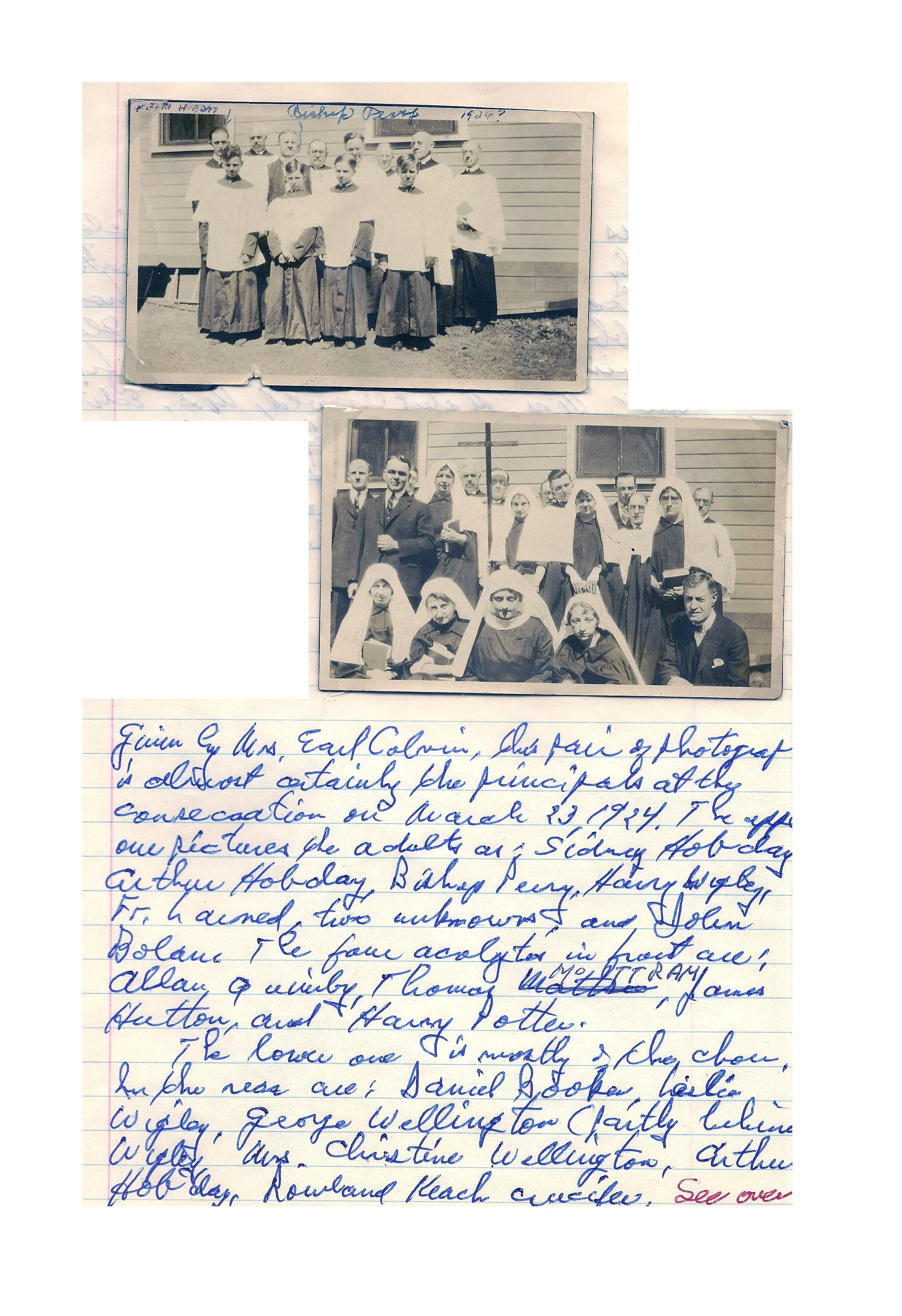








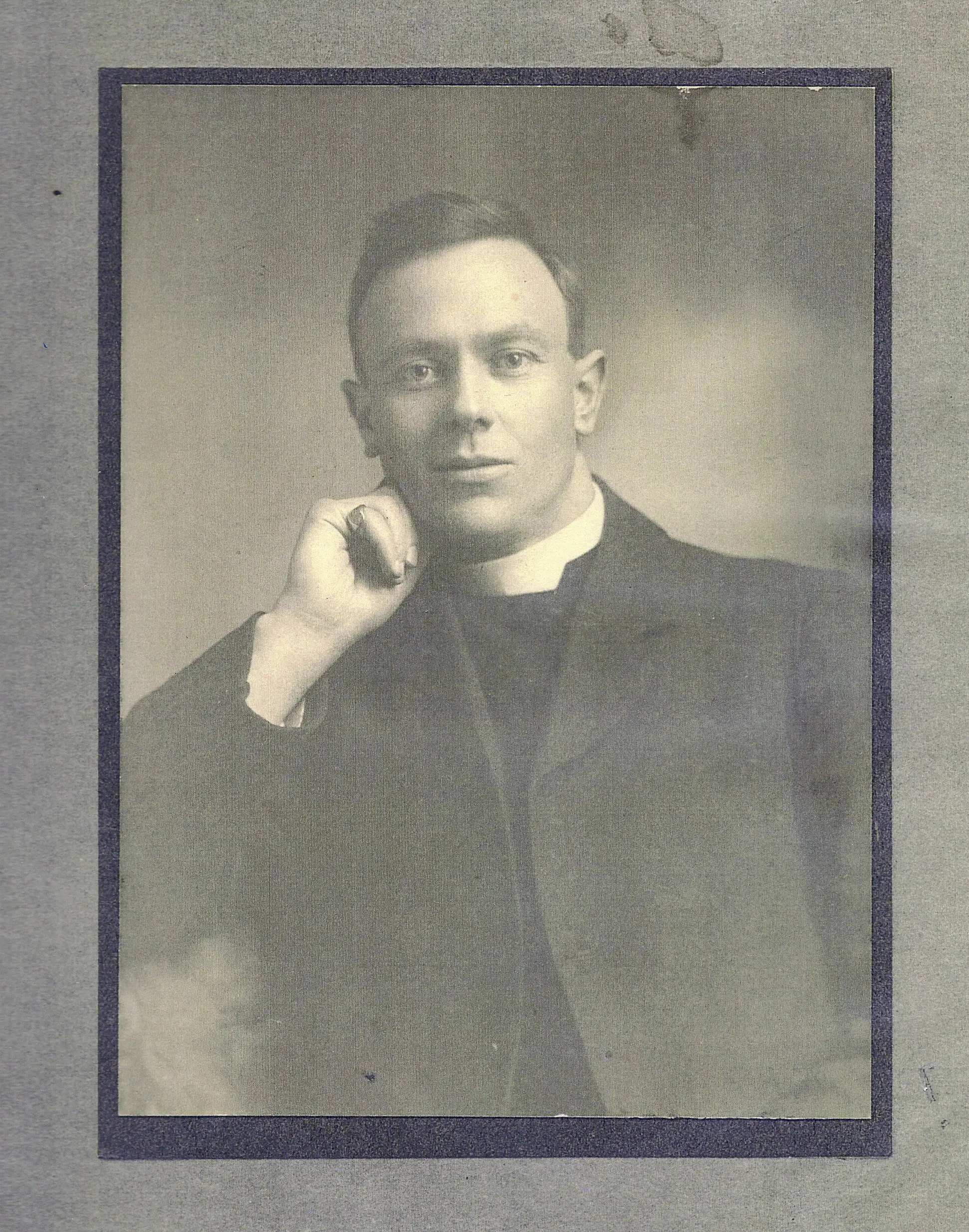


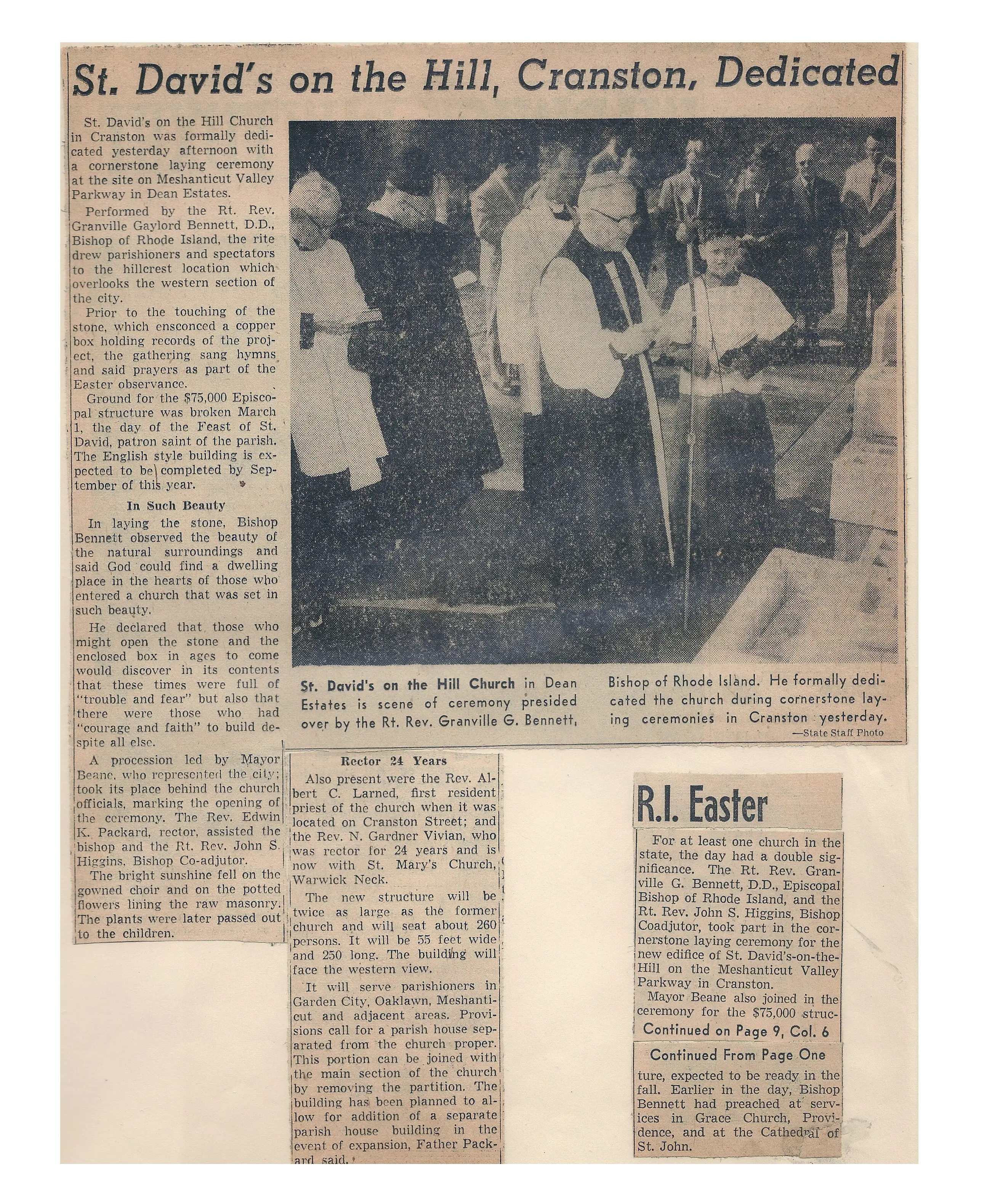



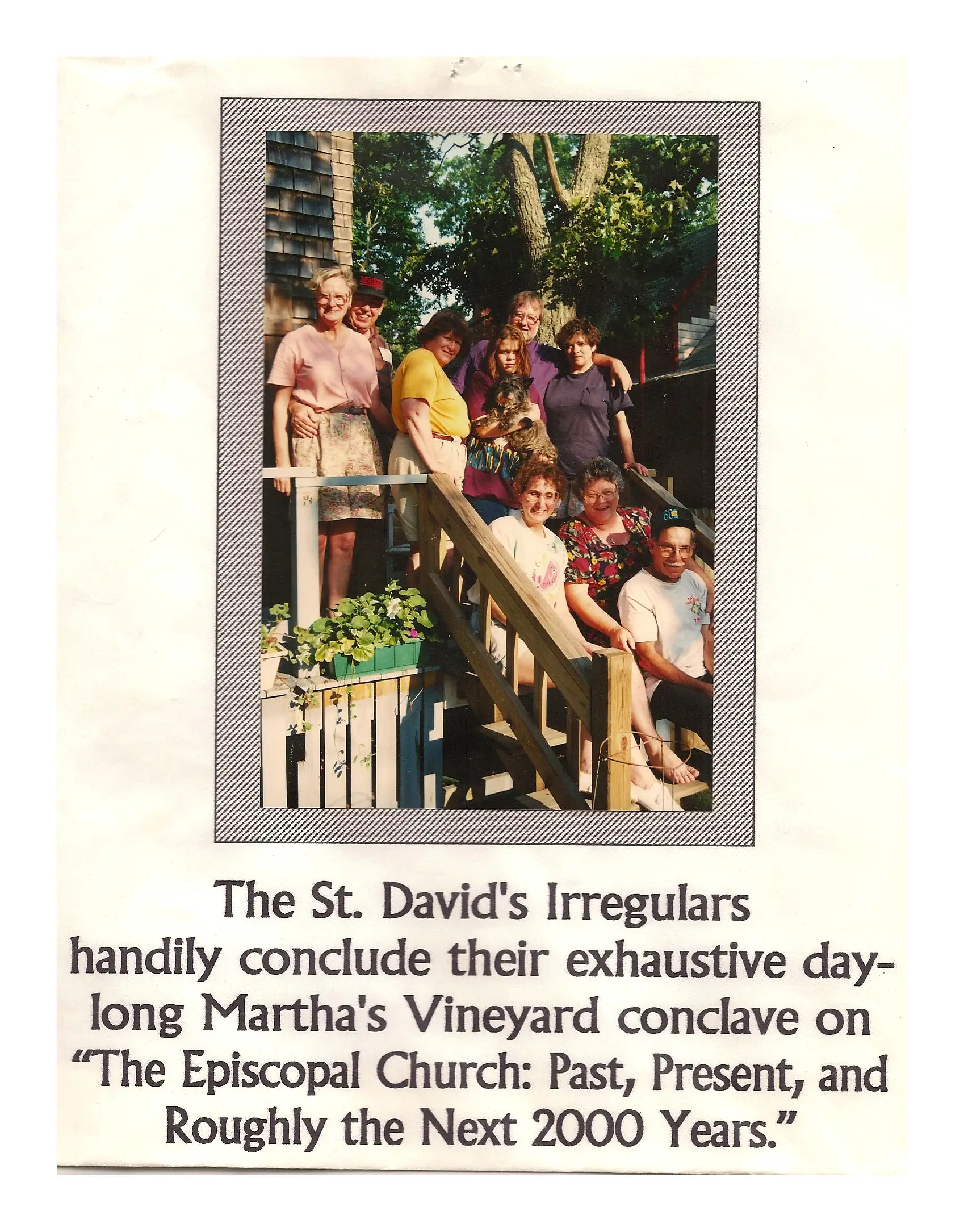
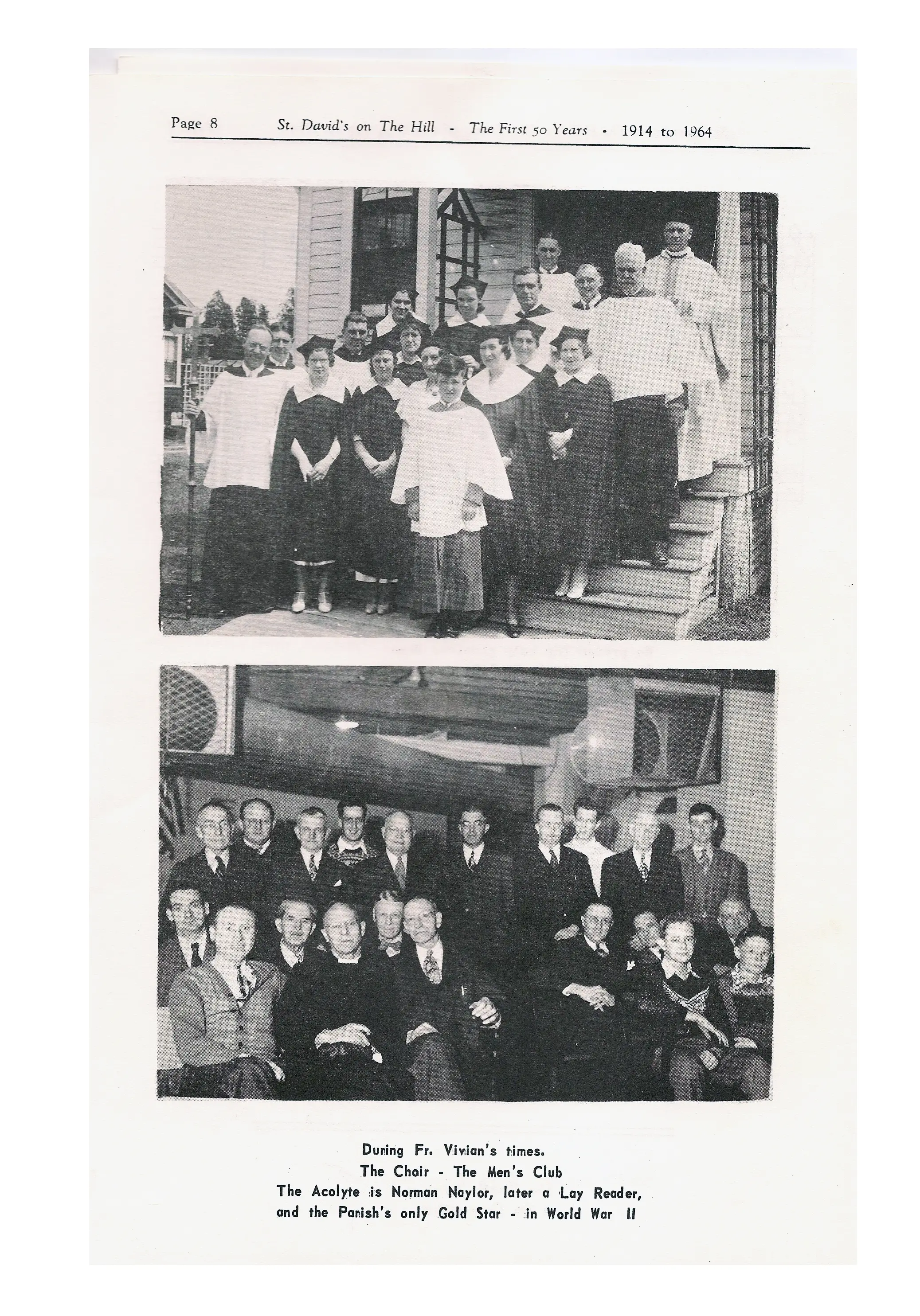

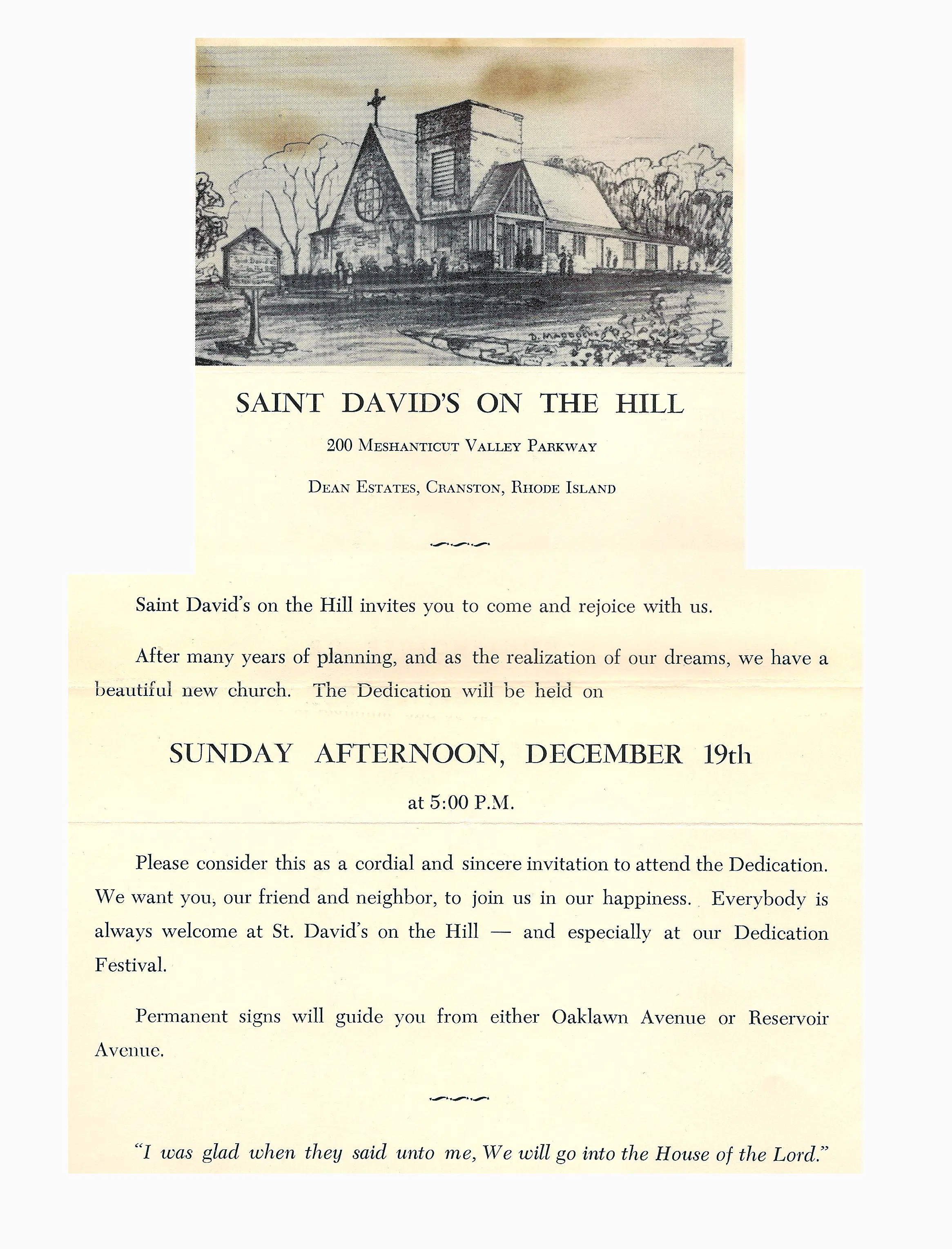















0 Comments